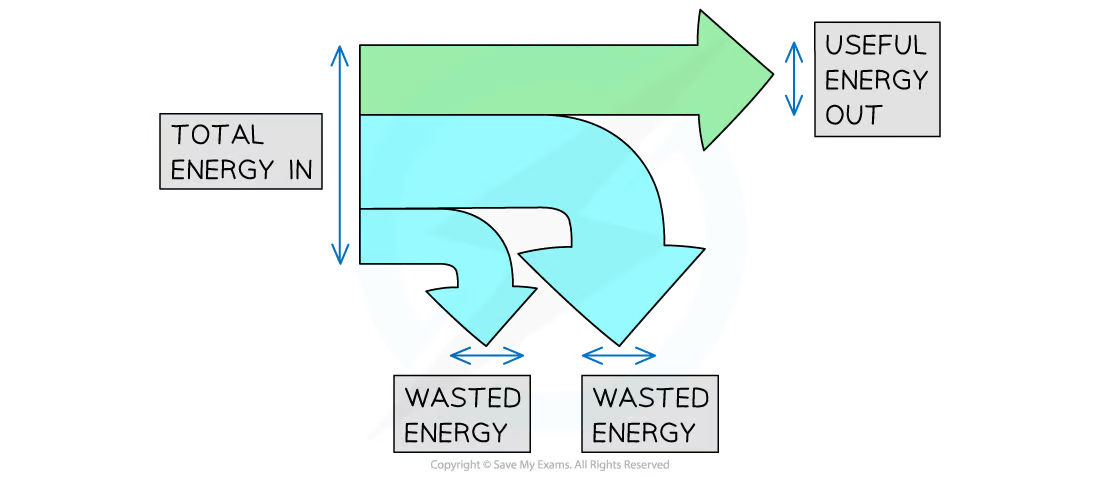A3 Work, Energy and Power
1/16
Earn XP
Description and Tags
Work energy power
Name | Mastery | Learn | Test | Matching | Spaced |
|---|
No study sessions yet.
17 Terms
A3.1 Energy
Energy is measure of work done. Amount of energy transferred = work done. Both measured in Joules kg m2 s-2
A3.2 Energy conservation
In closed system; no change in total E. Never created or destroyed, changes form. Universe is closed system, no change total E.
A3.3 Work done formula
Work done = Force x distance moved in direction of force (Nm = J)
Work done by resultant force = change in energy in system
transfer of energy when external force causes an object to move over a certain distance
F-s graph; area = W, when F is not paralel: W=Fs cosθ (θ is between F and s)
A3.4 Kinetic energy
Energy of a moving object (translational): Ek = ½ mv2 = p2/2m
A3.5 Gravitational Potential energy
When something is lifted off the ground, gains Ep, can lose when dropped/falling again
Ep = mgh. Uniform grav. field assumed.
A3.6 Elastic potential energy
Energy stored in material ( spring/string/elastic) when stretched/compressed
EH = ½ kx2 Hookes law. k=spring constant , x=extension of spring
EH = ½ Fx (F=kx)=restoring force). EH turns into Ek and other way around etcetc…
A3.7 Chemical energy
In a substance; in bonds
A3.8 Nuclear energy
Within nucleus of atom
A3.9 Internal energy
E something has due to its T (or state) - thermal/heat energy
A3.10 Energy dissipation
No transfer is 100% efficient, dissipated as thermal energy to the surroundings that is not used for another purpose; wasted energy. Useful/wasted energy.
A3.11 Examples of energy transfers
falling: grav potential → kinetic + Q
spring: elastic potential → kinetic + Q
battery: chemical → electrical
car: chemical (fuel) → kinetic
trampoline: elastic potential → kinetic → grav potential
A3.12 Sankey Diagram
Width indicates energy, used to display efficiency of a process. Total in = useful out + wasted energy.

A3.13 Mechanical Energy
sum = Ek + Ep + EH, change in mech → work done. Conserved when drag forces are neglible
A3.14 Energy and Power
Power = rate at which energy is transferred / work is done
P = Fv = W/t (Watts = Js-1)
A3.15 Efficiency formula
useful P or E out/total P or E in = η, unitless, between 0 and 1.
A3.16 Energy density
Energy / unit volume, Jm-3 used for fuels etc…coal, diesel, oil….
Energy / unit mass, Jkg-1
A3.17 Explosions
Kinetic energy and momentum conserved